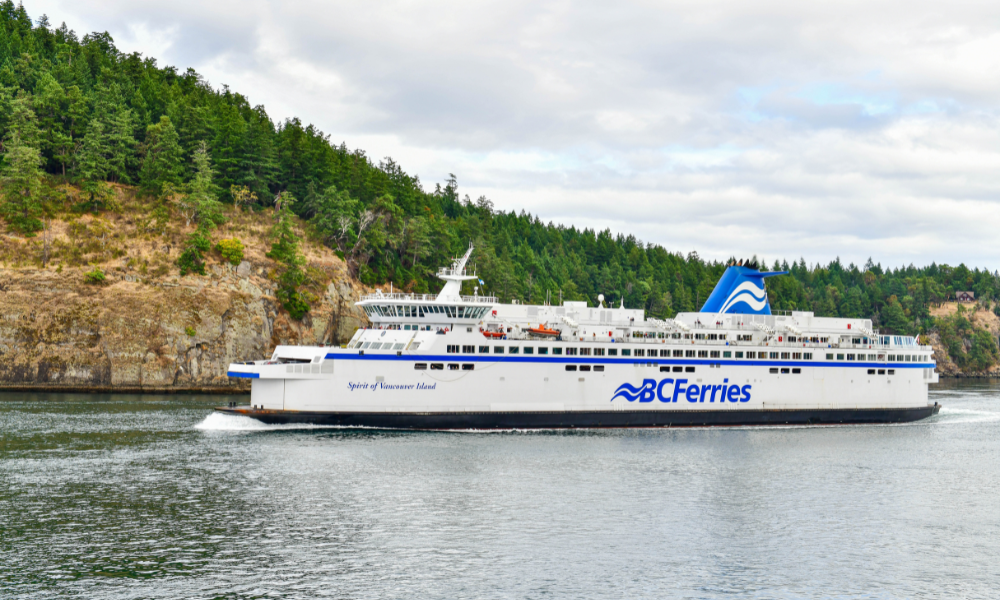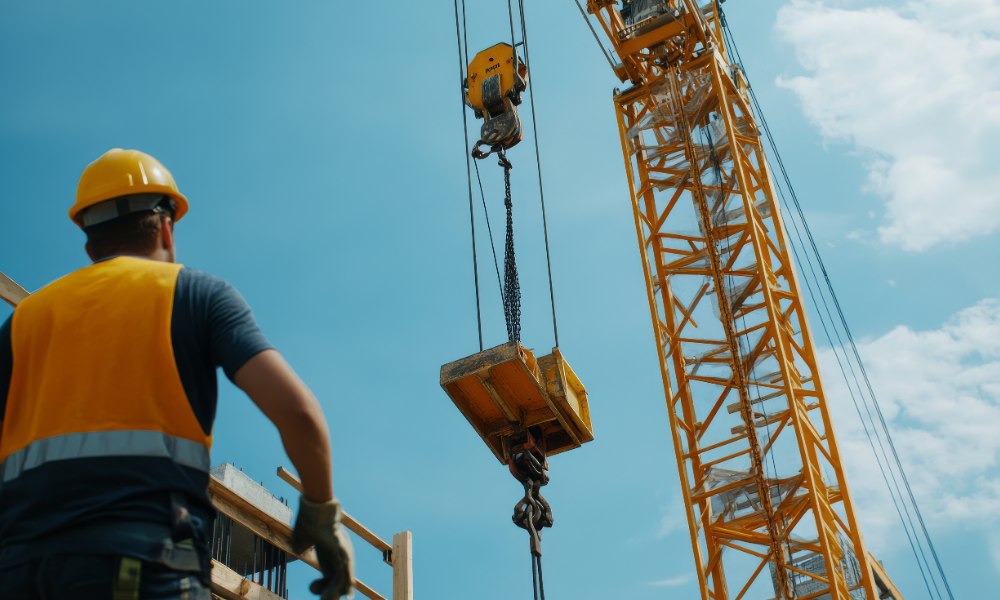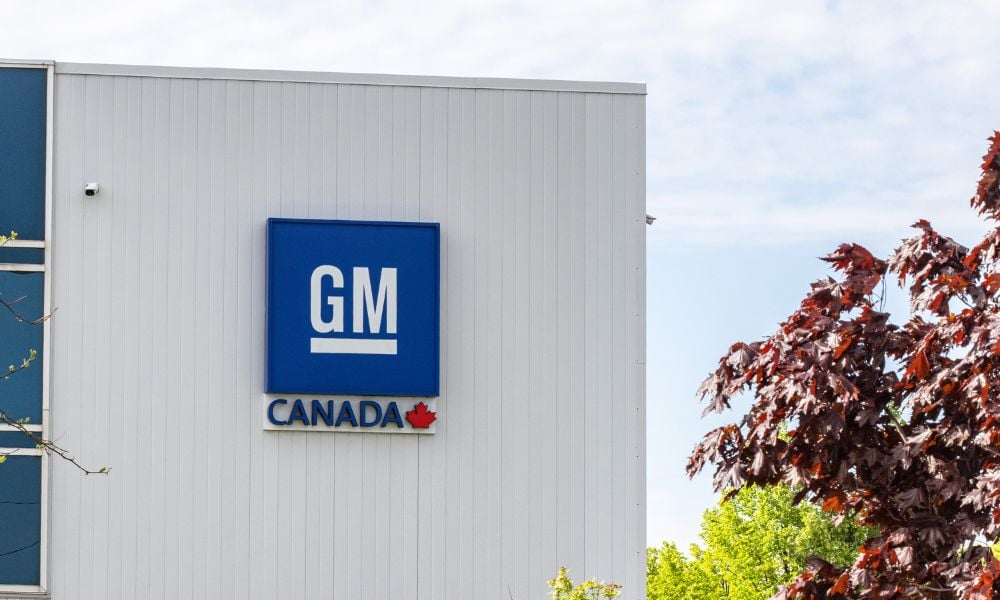Safety harnesses play a crucial role in reducing fall hazards in the worksite. Here are our top picks for the best safety harnesses for the construction site.
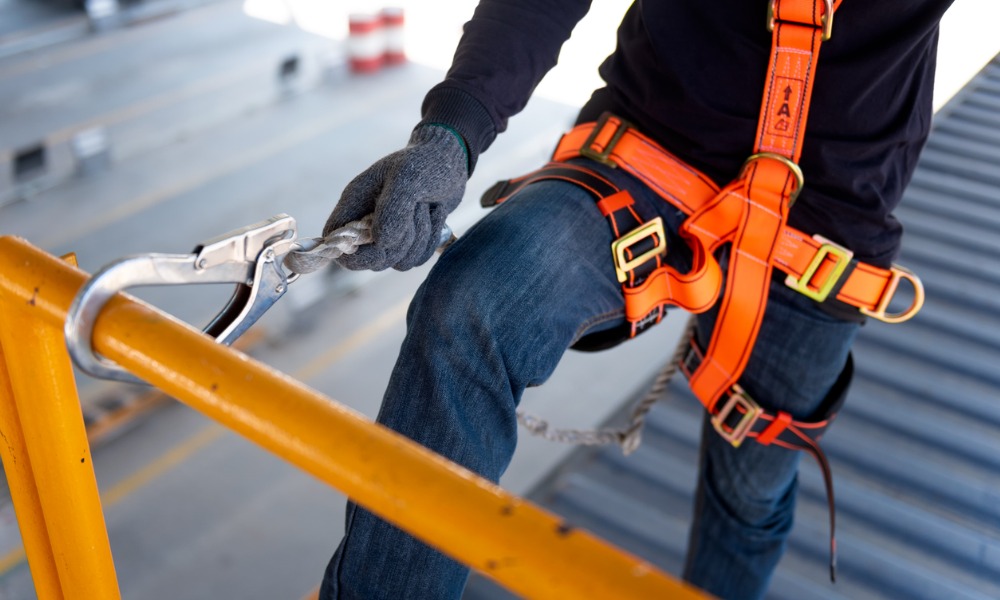
Occupational and health safety laws require employers to have fall protection systems in place for workers who are at risk of falling at least three metres. Safety harnesses play an important role in reducing fall hazards.
But how do you choose the best safety harness for your team?
To help narrow down your choices, Canadian Occupational Safety lists our top picks for the best fall protection harnesses for construction work. We will delve deeper into the key features and specifications. If you’re looking for the right safety harness for your team, this guide can help. Read on and find out what makes these types of personal safety equipment best suited for staff working at heights.
What are the best safety harnesses for construction work?
Safety harnesses are an essential part of an effective fall arrest system. Wearing the right fall protection harnesses often spells the difference between disabling or even fatal injuries and worker safety.
There are several types of safety harnesses to choose from. Depending on the nature of the work, one model may be better suited than the other. The products on our list are arranged alphabetically. All prices are current as of July 2, 2024.
Here are our picks for the best safety harnesses:
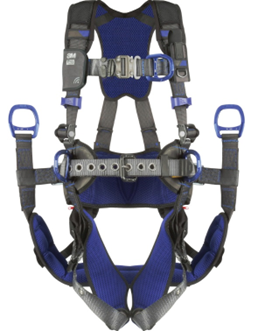
1. 3M DBI-SALA ExoFit X-Series safety harnesses
Key features: Auto-locking buckles, weight distribution system for some models
Price range: $639.00 to $706.20
3M’s DBI-SALA ExoFit X-Series safety harnesses boast patented auto-locking quick-connect buckles that reduce buckle slide and the need for wearers to readjust. The four D-ring anchors can be made of steel or aluminum. Some versions feature weight distribution systems. The fall protection equipment comes with padded shoulders, with some models having cushioned hips for improved comfort. It comes in sizes S to 2XL.
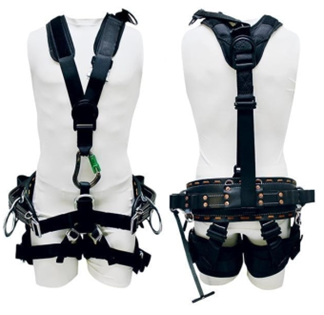
2. Buckingham Linepro Tower Harness
Key features: Patented quick-connect buckles, seven D-rings, padded shoulders and legs
Price range: $1,245.35 to $1,341.00
The Buckingham Linepro Tower Harness comes with a traditional line belt with patented quick-connect buckles and seven D-rings for easier work positioning. The adjustable front and back buckles ensure a snug fit. The fall protection equipment also has wide leg pads, padded shoulders, and a widened neck opening for enhanced comfort.
The Linepro Tower Harness is the best safety harness for aerial lineworkers. Accessories include tool loops, snaps, and rings.
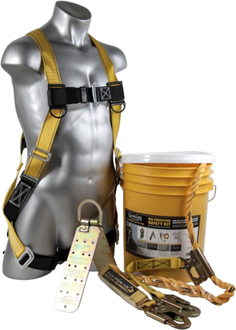
3. Guardian Bucket of Safe-Tie fall protection roofing kit
Key features: Five-gallon bucket, shock-absorbing lifeline
Price range: $96.99 to $171.97
Guardian’s Bucket of Safe-Tie fall protection kit is designed for roofers. It comes with a five-gallon bucket that fits a 50-feet vertical lifeline. The lifeline is made of polyester and integrates a shock-absorbing feature, eliminating the need for an additional shock absorbing lanyard. This also lessens the dead weight transferred to the dorsal D-ring, helping reduce fatigue.
Bucket of Safe-Tie is the best safety harness for roofing. It also suits construction work, thatching, and high-rise window cleaning.
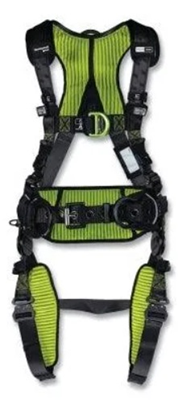
4. Honeywell H700 Full Body Harness
Key features: Patented release mechanism, self-retracting lifeline, pivot strap adjuster
Price range: $998.09 to $1,219.54
Honeywell’s H700 Full Body Harness features the “one-pull trauma relief steps,” a patented release mechanism that deploys two steps, one for each foot. This allows the wearer to maintain an upright position without putting pressure on the veins and arteries around the legs. This, in turn, helps them avoid serious injury.
The safety harness comes with a pivot strap adjuster for improved comfort and mobility. The self-retracting lifeline makes it easy to attach carabiners. The harness is made of breathable fabric and has padded shoulders.
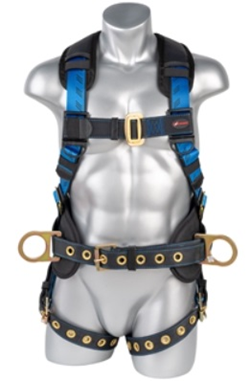
5. KStrong Kapture Essential+ construction harness
Key features: Five-point adjustable, 5,000-pound breaking strength, padded back, belt, and legs
Price range: $89.50 to $115.00
KStrong’s Kapture Essential+ is a five-point adjustable construction safety harness with padded back, waist belt, and legs. It has a dorsal attachment D-ring and two side D-rings to arrest fall. The leg straps have grommets for attaching tools. The safety harness is made of polyester with a breaking strength of 5,000 pounds. The capacity range is 130 to 310 pounds.
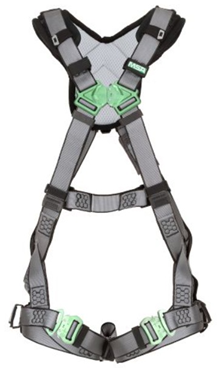
6. MSA V-FIT safety harness
Key features: RaceFlex buckle, athletic cut, quick pull-down adjustment, four lanyard keepers
Price range: $441.62 to $586.64
The V-Fit safety harness from MSA features the patent-pending RaceFlex buckle that eliminates the need for bulky chest straps, ensuring a snug fit. Its athletic cut follows the body’s contours for upper torso mobility. The padded shoulder straps eliminate pressure points and prevent chafing. The fall protection harness comes with quick pull-down adjustment and dedicated attachment point for personal fall limiters. Among the best safety harnesses when it comes to comfort, V-Fit has four lanyard keepers to keep lanyards away from sensitive areas.
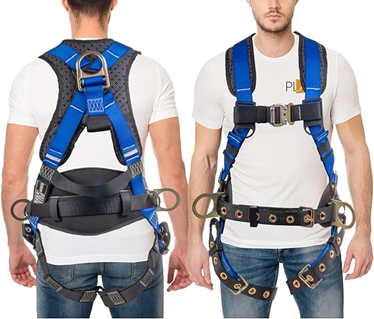
7. Palmer Safety Hammerhead safety harness
Key features: Heavy-duty padded back, quick-connect chest, steel D-rings
Price range: $74.68 to $122.47
Palmer Safety’s Hammerhead is a five-point safety harness that comes with a heavy-duty padded back support that distributes weight evenly. The dorsal and hip D-rings are made of steel that can support users weighing up to 420 pounds. The quick-connect chest allows the wearer to put on and take off the harness easily. The buckles and straps can also be quickly adjusted to fit the user's body, even while wearing gloves or other protective gear. These features make the Hammerhead among the best safety harnesses for the construction and oil and gas sectors.
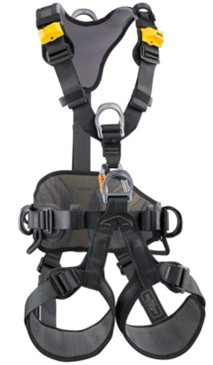
8. Petzl AVAO BOD full-body safety harness
Key features: Allows full range of motion, semi-rigid waist belt and leg loops, self-locking buckles
Price range: $685.00 to $740.00
The Petzl AVAO BOD full-body safety harness is designed to allow the wearer full range of motion over long shifts. It comes with a semi-rigid waist belt and leg loops for enhanced support. The self-locking double-back buckles makes adjustment easy. The five-point adjustable fall arrest harness uses specialized materials that prevent chafing and heat build-up while working.
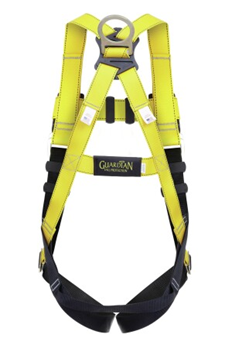
9. PSG Guardian Fall Protection S1 safety harness
Key features: Three-bar torso adjustment, quick-connect chest strap, water-resistant webbing
Price: $560.30
PSG’s Guardian Fall Protection S1 safety harness is a rugged utility option for users who need to grab their fall protection gear and safely get to work. The fall protection harness features three-bar torso adjustment for quick and proper fitting. It also has several connection points in multiple applications. The quick-connect chest strap makes the harness easy to put on and take off. The S1 comes with a water-resistant core webbing and impact indicators for easy inspection. It is available in four sizes.
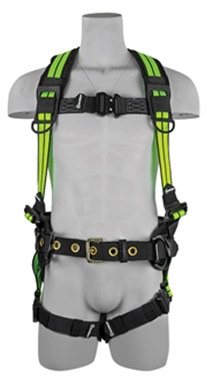
10. Safewaze PRO+ Flex Premium construction safety harness
Key features: Tangle-free D-ring pad, memory foam padding, quick-connect chest and leg straps
Price: $260.99 to $299.99
The Safewaze PRO+ Flex Premium is one of the best safety harnesses for construction. It features a tangle-free D-ring pad that reduces web knotting and relieves back pressure. The D-rings are made of lightweight aluminum. The construction harness comes with a free-floating back pad and breathable leg pads for enhanced comfort. The memory foam padding ensures a snug fit. The fall arrest harness has a capacity of 420 pounds. The quick-connect chest and leg straps make wearing easier.
Find out more about the importance of fall protection systems in the workplace in this article.
What are the different types of safety harnesses?
Safety harnesses are a type of personal protective equipment designed to protect the wearer from the risk of falling while working at heights or on an elevated platform. Harnesses serve as an attachment between the wearer and a stationary anchor point held by a cable and a locking mechanism. These are designed to prevent the wearer from falling or moving outside a safe range.
There are five classes of safety harnesses used in Canadian workplaces:
- Class A harnesses are used for general fall arrest situations like most models featured on our best safety harness list. They have large D-ring anchor points on the back. These harnesses are most suited for the construction and manufacturing sectors.
- Class L harnesses are also called ladder harnesses. This type of safety harness allows users to attach themselves to climbing structures or vertical safety systems. Some professionals who use Class L harnesses include arborists, lineworkers, and wind turbine workers.
- Class P harnesses have two D-ring anchors near the hips. These allow the wearers free use of both hands while working at heights. They are also known as positioning harnesses.
- Class E harnesses are designed for emergency evacuation. These have two D-ring anchors on the shoulders that let the user maintain an upright position while being raised or lowered.
- Class D harnesses are used for situations where the user needs to be raised or lowered vertically. This type of harness has two D-ring anchors on the shoulders. Some versions come with padded seats.
Find out which type of safety harnesses fit your business’ needs in this industry-by-industry guide to personal safety equipment.
Are safety harnesses required in Canada?
The Canada Occupational Safety and Health Regulations require employers to provide fall protection systems if workers are at risk of falling at least three metres or 10 feet. These systems are in addition to the personal protective equipment that employees wear on the worksite.
According to the Canadian Centre for Occupational Health and Safety (CCOHS), fall protection systems include:
- fixed barriers, including handrails and guardrails
- surface opening protection such as covers
- warning barriers and control zones
- fall or travel restraint systems, including safety harnesses, belts, and lanyards
- fall containment systems such as safety nets
- fall arrest systems – device or equipment that stops a worker’s fall before they hit the ground
Each jurisdiction implements slightly different rules when it comes to fall protection systems. The table below sums up the regulations for each province and territory. You can also click on the links for the complete details of each piece of legislation.
Best safety harness – fall protection regulations across Canada
|
Jurisdiction |
Legislation |
General requirements |
|
SOR/86-304 Sections 12.01 to 12.09 |
Employers must provide a fall-protection system if work is done:
|
|
|
Occupational Health and Safety Code, 191/2021 Part 9, Fall Protection Sections 138 - 161 |
An employer and a supervisor must ensure that a worker is protected from falling:
|
|
|
Occupational Health and Safety Regulations, B.C. Reg. 296/97 Part 11, Fall Protection, Sections 11.1 to 11.10 |
An employer must ensure that a fall protection system is used when work is being done at a place:
|
|
|
Workplace Safety and Health Regulation, Man. Reg. 217/2006 Part 14, Fall Protection, Sections 14.1 to 14.29 |
This section applies to every workplace where there is a risk of a worker falling:
|
|
|
General Regulation -N.B. Reg. 91-191 Part VII, Protective Equipment, Sections 49 - 51 |
The employer shall provide, and the employee shall continually use a fall protection system when an employee works from:
|
|
|
Occupational Health and Safety Regulations, 2012, N.L.R. 5/12 Part X, Fall Protection, Sections 138 to 146 |
A fall protection system is required where a worker is at risk of falling from a work area that is:
|
|
|
Northwest Territories and Nunavut |
Occupational Health and Safety Regulations, R-039-2015 Part 7, Personal Protective Equipment, Sections 103 to 109 and Part 9 Safeguards, storage, warning signs and signals, Sections 118 to 124 |
An employer shall ensure that workers use a fall protection system at a work site if:
|
|
Workplace Health and Safety Regulations, N.S. Reg. 52/2013 Part 21, Fall Protection, Sections 21.1 to 21.4 |
Fall protection is required if a person is at risk of falling from a work area where the fall distance is:
|
|
|
Construction Projects, O. Reg. 213/91 Sections 26 - 26.9 And Industrial Establishments, R.R.O. 1990, Reg. 851 Section 85 |
Construction Regulations: Apply where a worker may be exposed to any of the following hazards:
Industrial Regulations: Apply where a worker is at risk of falling and the surface to which they might fall is more than 3 metres below the position where they are situated |
|
|
Fall Protection Regulations, EC2004-633 |
An employer is required to provide a means of fall protection where a worker is at risk of falling from a work area that is:
|
|
|
Regulation respecting occupational health and safety, O.C. 885-2001 Division XXX, Means and Equipment for Individual and Group Protection Sections 347 - 354.1 And Safety Code for the construction industry R.R.Q. 1981, c. S-2.1, r. 6 Division II, General Provisions Sections 2.9.1 to 2.9. |
Workers shall be protected against falls in the following cases:
|
|
|
Occupational Health and Safety Regulations, 2020 Sections 9-2 - 9-5 |
An employer or contractor shall develop a written fall protection plan if:
|
|
|
Occupational Health and Safety Regulation, O.I.C. 2006/178 Protective Equipment and Clothing - Fall Arrest Sections 1.37 to 1.43 |
Where it is not practical to protect a worker by guards, guardrails, safety nets, or other devices, the worker shall be provided with and required to use the appropriate fall arrest protection:
|
Find the answers to the most common questions about fall protection systems in Canada in this guide.
What factors should you consider when looking for the best safety harness?
When searching for the best safety harnesses for your construction team, there are certain factors that you need to consider. These include:
Materials
The types of materials dictate the strength and durability of the safety harness. For the strap, nylon and polyester are the most popular materials.
Nylon is soft and flexible and has a relatively high break strength. The main drawback is that it absorbs water quickly and is prone to molding. Polyester is more durable than nylon and does not absorb water easily. However, it does not stretch the way nylon does. Some safety harnesses also use engineered fabrics, which are stronger, more flexible, and last longer than traditional textiles.
For the rings, aluminum and steel are two of the most popular choices. Steel withstands extreme temperatures and is stronger than aluminum. Aluminum is lightweight and more malleable than steel.
Fit and adjustability
The best safety harness must have multiple adjustable straps. These allow it to adapt to different body sizes and contours. The best safety harnesses for construction come with padded straps that distribute weight evenly to reduce fatigue.
Industry
Different industries have varying requirements when it comes to fall protection. Make sure that you pick the right safety harnesses for the tasks your workers are performing. Construction worksites often require Class A harnesses, but some jobs may need Class L or Class P harnesses.
Certification
Fall protection equipment used in Canadian worksites must meet CSA Standards Z259.17:16. For safety harnesses, the relevant certifications include:
- CSA Z259.1-05 (R2015) – Body belts and saddles for work positioning and travel restraint
- CSA Z259.2.3:16 – Descent devices
- CSA Z259.10-12 (R2016) – Full body harnesses
- CSA Z259.11-17 – Personal energy absorbers and lanyards
- CSA Z259.12-16 – Connecting components for personal fall-arrest systems (PFAS)
- CSA Z259.17-16 – Section and use of active fall-protection equipment and systems
Get more news and information about the best safety harnesses for your industry by visiting our Product Resources page. Be sure to bookmark this page for the latest industry updates.
What’s your pick for the best safety harness? Let us know in the comments.


